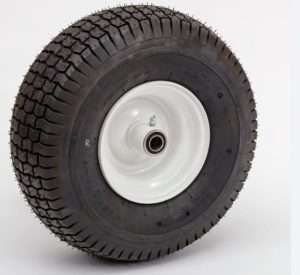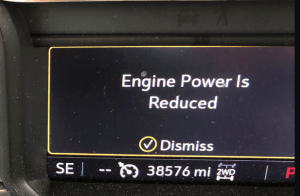How to Read Sidewall Markings “Discover What Your Tires Have to Say”
Have you ever wondered what all those letters and numbers on the sides of your tires mean? If so, you’re not alone. Many people don’t know how to read sidewall markings, but it’s actually quite simple. In this article, we’ll explain everything you need to know about reading sidewall markings.
When shopping for tires, it is important to know how to read the sidewall markings in order to select the best tire for your vehicle. The sidewall of a tire is marked with a lot of information, but if you know what to look for, it can help you choose the right tire.
What are sidewall markings?
Sidewall markings are the numbers and letters you see on the sides of tires. They provide information about the tire’s size, speed rating, load index, and other important details. Reading sidewall markings can help you choose the right tires for your vehicle.
The first thing you’ll notice on a sidewall is the tire size. This is followed by the load index and speed rating. A load index is a number that indicates how much weight the tire can carry. The speed rating is a letter that indicates the maximum speed at which the tire can be driven.
Other sidewall markings include the ply rating, which tells you how many layers of reinforcing cords are used in the tire’s construction, and the treadwear rating, which is a measure of how long the tire is expected to last.
How to read them
Tire type and size:
The tire type is listed with one or more letters. This gives you a rough idea of the tire’s intended purpose, but it doesn’t tell you everything. A P195/65R15 is an example of a tire size and type combination. Some of the letters used in tire type designations include:
P – Passenger
LT – Light Truck, or SUV
ST – Special Trailer (used on trailers weighing less than 10,000 lbs.
G – SUV/Truck C – Commercial (used on heavy-duty trucks)
ZR – Off-Road or All Terrain (used on off-road vehicles and some SUVs) Speed Rating: The speed rating indicates the maximum speed the tire can carry for extended periods of time.
Tire width
Generally expressed in inches. The first number is the tire width, and the second number is the aspect ratio of height to width (e.g., a 215/60R16 is a 16-inch wide tire with an aspect ratio of 65).
Tire load capacity s or maximum load ratings are expressed in pounds. The maximum load rating for tires is based on a 2-axle, 4-tire vehicle with a fifth-wheel trailer attached. Load capacity rating will vary according to the number of axles and tires fitted per axle.
Aspect ratio
It’s the relationship of a tire’s section height to its section width. For example, a 215/60R16 tire has an aspect ratio of 60 i.e., it is 60 percent as high as it is wide. The higher the aspect ratio, the narrower and taller the tire appears. The lower the ratio, the wider and shorter the tire appears.
Construction
Indicates the number of plies or layers of rubber-coated fabric in the tire carcass. A higher ply rating indicates a stronger sidewall and more durable construction.
Construction type Indicates the configuration of the tire’s tread elements (e.g., bias, belted). Tread pattern Indicates the arrangement and shape of the tread elements that make up the tire’s tread design.
Wheel diameter
Indicates the wheel diameter or nominal size of the tire. For example, a 25.5″ diameter tire would be appropriate for a 10-hole wheel whose diameter is 25.5″.
Load index and speed rating
A load index is a number that corresponds to the maximum weight that the tire can safely carry. The speed rating is a letter that corresponds to the maximum speed at which the tire can be used.
For example, a tire with a load index of 91 and a speed rating of Q will have a maximum weight capacity of 1778 pounds and can be used at speeds up to 106 mph.
It is important to know the load index and speed rating of your tires so that you can properly maintain them. If you overload your tires, they could fail and cause an accident. If you drive too fast for your tire’s speed rating, it could also fail and cause an accident.
Conclusion
When it comes to reading sidewall markings, there are a few things to keep in mind. First, the width of the tire is always listed first, followed by the height.
The aspect ratio is the next number listed and it corresponds to the height of the tire. The last number is the diameter of the wheel that the tire can be mounted on.
Now that you know how to read sidewall markings, you can make sure that you’re getting the right tires for your car. Keep these tips in mind and you’ll be able to choose the perfect tires for your vehicle.
FAQs Based on How to Read Sidewall Markings
1. What do the numbers on a tire’s sidewall mean?
The numbers on a tire’s sidewall represent the tire’s width, height, and diameter.
2. How do I know if a tire will fit my car?
The best way to know if a tire will fit your car is to consult your car’s owner’s manual or the tire manufacturer.
3. What is the difference between a tire’s load index and speed rating?
A tire’s load index is a number that represents the maximum amount of weight the tire can support. The speed rating is a letter that represents the maximum speed the tire can travel at.
4. What do the letters on a tire’s sidewall mean?
The letters on a tire’s sidewall represent the tire’s speed rating and load index.
5. How often should I have my tires inspected?
It is generally recommended that you have your tires inspected every 6 months or 6,000 miles, whichever comes first.



